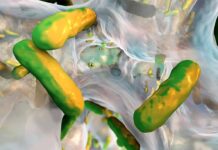Introduction: Peering into the Labyrinth
Deposition, a process akin to a chameleon, morphs and shapes itself into various forms and mechanisms, weaving itself through the tapestry of science. It dwells in the realms of geology, materials science, and atmospheric science, while its intricate nature often remains hidden. Within this article, we shall embark on a journey to unravel the elaborate world of deposition definition science, exploring its types, mechanisms, and applications.
I. Types of Deposition: A Trio of Conundrums
Dancing through the labyrinth of deposition definition science, we encounter three primary types of deposition, each a puzzle of its own: sublimation, condensation, and freezing.
A. Sublimation: A Vanishing Act
Sublimation stages a disappearing act, as solids perform a daring leap into gaseous form, bypassing the liquid state. The vapor pressure of the solid triumphs over ambient pressure, culminating in phenomena like dry ice evaporation or snow transforming into vapor.
B. Condensation: Materializing from the Mist
Conversely, condensation manifests as gas transforms into liquid, the vapor pressure yielding to ambient pressure. Gas particles encounter a cool surface, materializing into dew on grass or clouds in the sky.
C. Freezing: The Solidification Tango
Freezing, the final act, sees liquid transmuting into solid as the temperature plummets below freezing point. From ice cubes forming in a freezer to lakes freezing in winter, freezing encapsulates these transformations.
II. Mechanisms of Deposition: Navigating the Intricate Web
Deposition weaves its web through various mechanisms, each adorned with its own complexities.
A. Physical Vapor Deposition: The Sublimation Waltz
Physical vapor deposition (PVD) converts solid material into vapor through sublimation, which then forms a thin film on a substrate. PVD utilizes high-energy sources like plasma or electron beams to heat solid material, inducing sublimation. The vapor journeys towards the substrate, condensing into a thin film.
B. Chemical Vapor Deposition: The Gaseous Alchemy
Chemical vapor deposition (CVD), on the other hand, morphs gaseous precursors into solid materials through a chemical reaction on a substrate. CVD requires a precursor gas—often a halide or organic compound—and a heated reaction chamber. The gas enters the chamber, reacting with the substrate and creating a solid material.
C. Precipitation: The Transformation Cascade
Precipitation transforms dissolved substances into solids via chemical reactions or alterations in temperature or pressure. Occurring in various contexts, precipitation contributes to mineral formation, metal purification, and wastewater treatment.
III. Applications of Deposition: A Tapestry of Burstiness
A. Materials Science: Crafting Thin Films
Deposition weaves itself into materials science, forming thin films for electronic devices like computer chips, solar cells, and displays. Techniques like PVD, CVD, and atomic layer deposition offer precision in controlling film thickness, composition, and properties.
B. Geology: Shaping Sedimentary Rocks
In geology, deposition molds sedimentary rocks through the accumulation and consolidation of sediment particles, transported by water, wind, or ice.
C. Atmospheric Science: Clouds and Precipitation
Atmospheric science witnesses deposition in cloud and precipitation formation. Water vapor condenses onto atmospheric particles, creating droplets or ice crystals that eventually fall as rain, snow, or sleet.
Conclusion: Embracing the Complexity of Deposition Definition Science
To truly grasp deposition definition science, one must delve into its perplexing and bursty nature, deciphering the intricate dance of its types, mechanisms, and
applications. Such understanding empowers scientists to innovate new materials, enhance our comprehension of geological processes, and predict and mitigate climate change impacts.
Recognizing deposition’s burstiness in human language is crucial; describing these complex concepts requires comprehensive, yet accessible language. By immersing ourselves in the intricacies of deposition, we unlock new scientific and technological possibilities, propelling us towards a more sustainable and prosperous future.
Google News | Telegram















